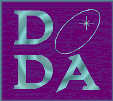You are here
2017 Brouwer Award Winner - Ortwin Gerhard
The Division on Dynamical Astronomy is delighted to announce the 2017 recipient of the Brouwer Award is Professor Dr. Ortwin Gerhard of Max-Planck-Institut für extraterrestrische Physik, Garching, Germany.
 Gerhard is best known for his continuing achievements in modeling the inner Milky Way, where he has established himself as the premier authority. The inner Galaxy is not only obscured by dust in the disk plane, but we also view it in projection from our location within the outer disk. In order to unravel the inner structure, he and his group have utilized data from many wavebands and combined them with increasingly sophisticated modeling techniques to build a picture of a barred disk galaxy, in which the inner bar is the box/peanut structure visible in infrared surveys. The picture of the inner Galaxy established by Gerhard’s group is cosmologically important because it establishes that baryons are completely dominant in the inner part of our fairly typical Galaxy. In addition to making excellent use of N-body simulations, his team has developed and used the made-to-measure method (aka NMAGIC) for tailoring N-body simulations to match observational data. This substantial body of work is summarized in the authoritative Annual Reviews article by Bland-Hawthorn & Gerhard (2016). The insights in this definitive article depend significantly on Gerhard’s dynamical experience and expertise. Gerhard has also played a leading role in other problems of galactic dynamics, in particular the challenge of inferring the mass profile from kinematic observations of tracer objects whose velocity anisotropy is unknown. Gerhard was a major player in the planetary nebula project, which extended our knowledge of the dynamics of elliptical galaxies to the largest scales yet probed. His collaborative studies of planetary nebulae in clusters of galaxies led to the first measurements of the motions of the intracluster stars making up the diffuse light in the Virgo and Coma clusters, and therefore to insights into the processes by which such intracluster light is produced.
Gerhard is best known for his continuing achievements in modeling the inner Milky Way, where he has established himself as the premier authority. The inner Galaxy is not only obscured by dust in the disk plane, but we also view it in projection from our location within the outer disk. In order to unravel the inner structure, he and his group have utilized data from many wavebands and combined them with increasingly sophisticated modeling techniques to build a picture of a barred disk galaxy, in which the inner bar is the box/peanut structure visible in infrared surveys. The picture of the inner Galaxy established by Gerhard’s group is cosmologically important because it establishes that baryons are completely dominant in the inner part of our fairly typical Galaxy. In addition to making excellent use of N-body simulations, his team has developed and used the made-to-measure method (aka NMAGIC) for tailoring N-body simulations to match observational data. This substantial body of work is summarized in the authoritative Annual Reviews article by Bland-Hawthorn & Gerhard (2016). The insights in this definitive article depend significantly on Gerhard’s dynamical experience and expertise. Gerhard has also played a leading role in other problems of galactic dynamics, in particular the challenge of inferring the mass profile from kinematic observations of tracer objects whose velocity anisotropy is unknown. Gerhard was a major player in the planetary nebula project, which extended our knowledge of the dynamics of elliptical galaxies to the largest scales yet probed. His collaborative studies of planetary nebulae in clusters of galaxies led to the first measurements of the motions of the intracluster stars making up the diffuse light in the Virgo and Coma clusters, and therefore to insights into the processes by which such intracluster light is produced.
First in Heidelberg, then in Basel and finally at the Max-Planck-Institut für extraterrestrische Physik, Garching, he has built research groups of international standing, wherein he has fostered a strong and coherent research program that involves graduate students and postdocs. Several of his former students and postdocs are now leaders in Galactic Dynamics in their own right. His international service to the astronomical community includes his service as President of IAU Division VII and as Vice-President and President of IAU Commission 33. Ortwin Gerhard’s broad contributions to understanding the dynamics and structure of the inner Milky Way as well as more distant elliptical galaxies and clusters are wide-ranging and deep, and have radically changed our views of these systems. Ortwin Gerhard will deliver an invited lecture at the 2018 DDA Meeting.
